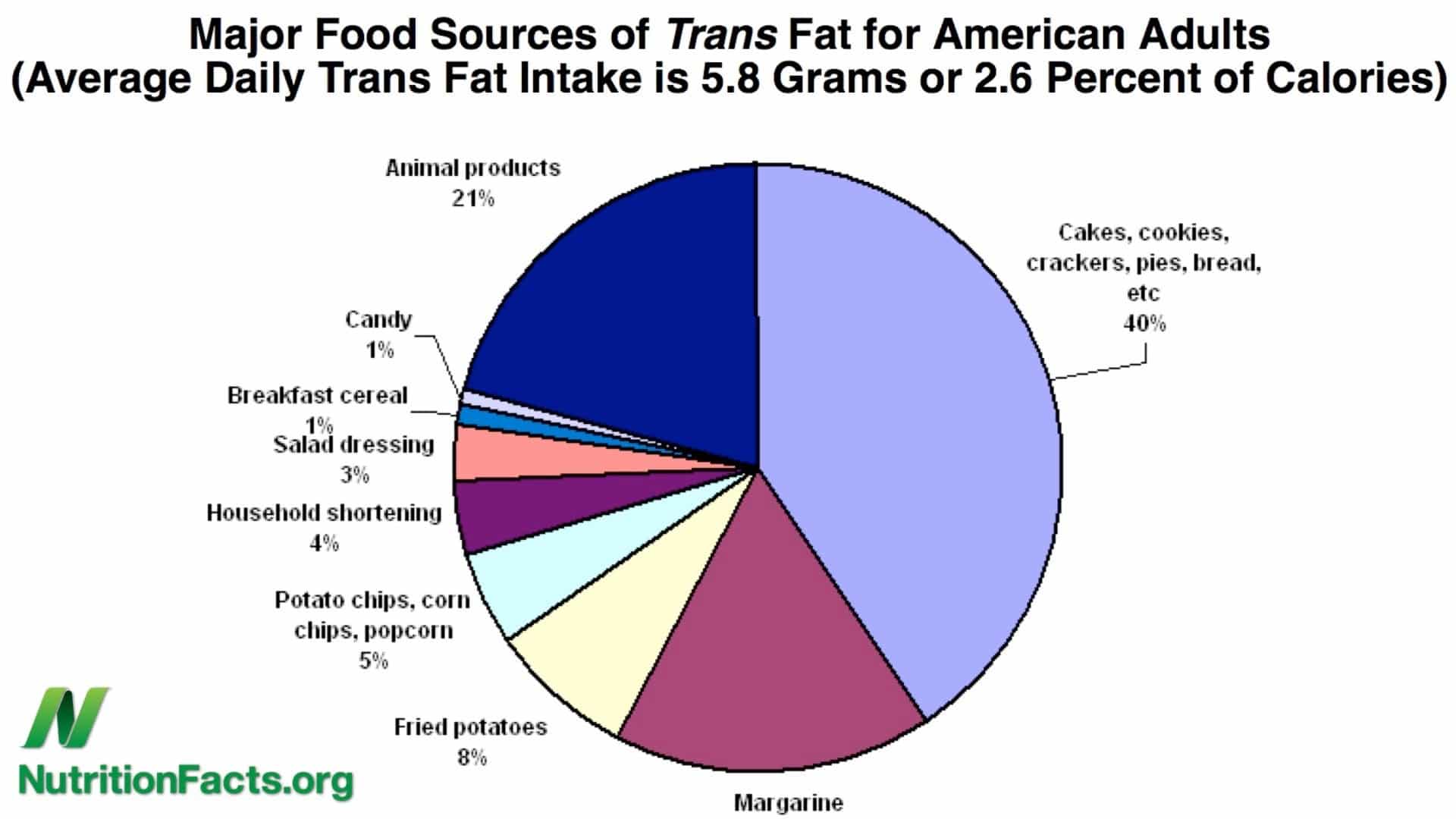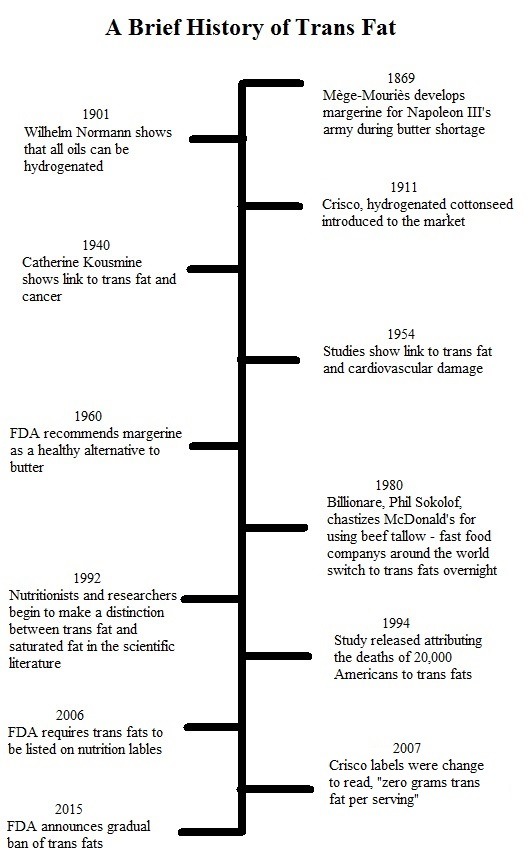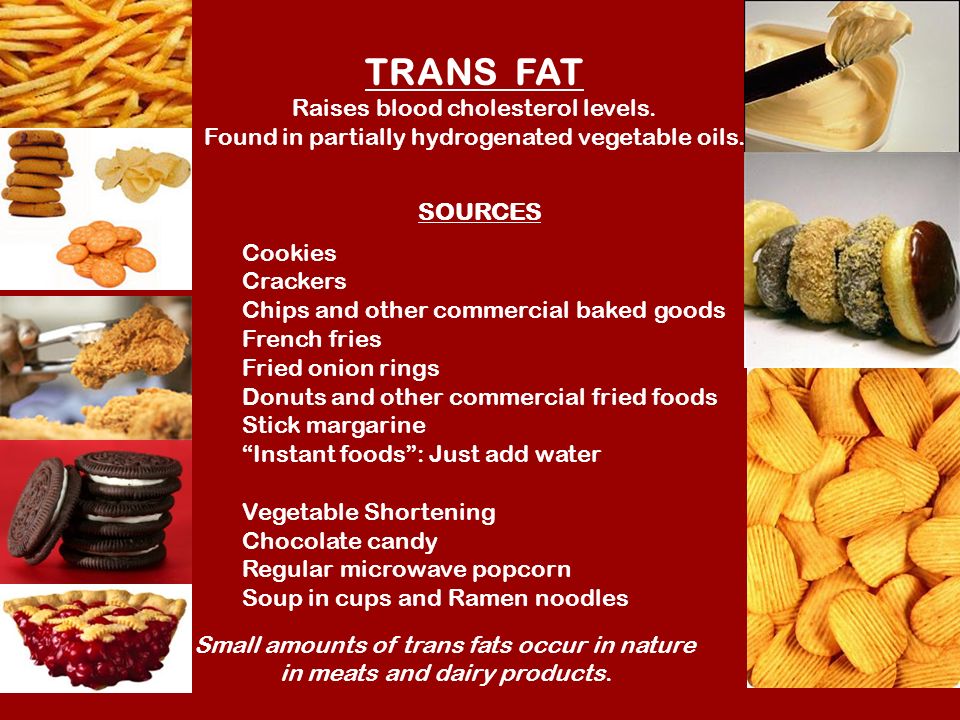About Trans Fat . There are four kinds of fats: monounsaturated fat, polyunsaturated fat, saturated fat, and trans fat. Monounsaturated fat and polyunsaturated fat …

The intake of trans fats, which come mostly from junk food and products; saturated fat, mostly from dairy products and chicken; and cholesterol, coming mostly from eggs and chicken, should be as low as possible.
This disambiguation page lists articles associated with the title Trans. If an internal link led you here, you may wish to change the link to point directly to the intended article.

NOTICE When we started this website in April 2003, trans fats were not even on the national radar screen. It was easy to maintain a trans fat website in those days, because so little was happening.
The food industry fought tooth and nail to retain partially hydrogenated oils, even though they were killing 50,000 Americans a year.

For years, fat was a four-letter word. We were urged to banish it from our diets whenever possible. We switched to low-fat foods. But the shift didn’t make…
We know research shows that reducing trans fat in the American diet helps reduce risk of heat disease, but how and why? Let’s try to clear up the confusion about trans fats.

The FDA’s proposal to ban trans fat has increased demand for palm oil, but is palm oil a good alternative for human health and the environment? In November 2013, the FDA gave public health professionals a reason to celebrate by publishing a formal Federal Register notice proposing a ban on

Trans fat, or trans-unsaturated fatty acids, trans fatty acids, are a type of unsaturated fat that occur in small amounts in nature, but became widely produced industrially from vegetable fats for use in margarine, snack food, packaged baked goods, and frying fast food starting in the 1950s.

How unsafe is canola oil (seed oil) as far as the issue of trans fats are concerned? What alternatives are there?



